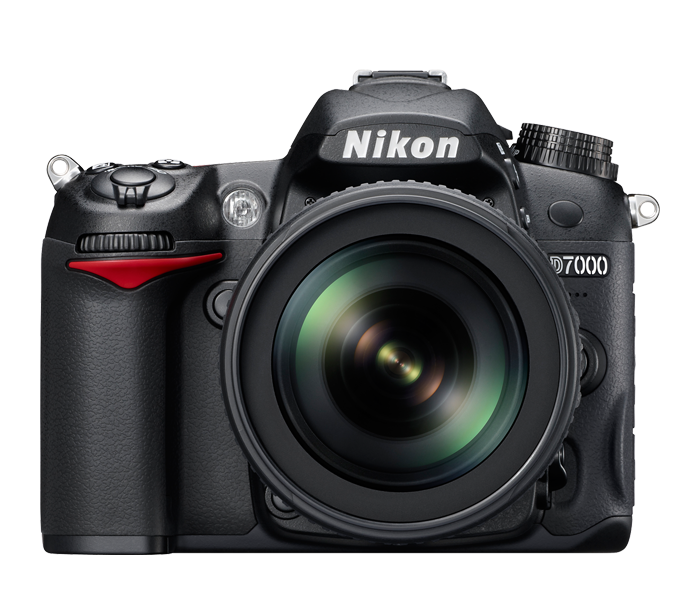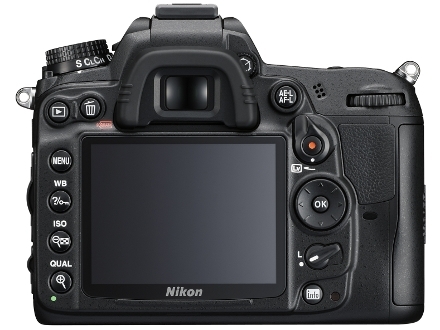Nikon D7000 is a high resolution DSLR Camera. The camera offers equal opportunities for both professional and amateur photographers.
If you want to upgrade from digital SLR to high-end DSLR, it is worthwhile to go through the following lines to understand the capabilities of Nikon D7000.
With high definition video capturing capability and GPS functionality, you will be able to extend your multimedia horizon. Let us find complete details.
Nikon D7000: Specifications
Nikon D7000 offers user friendly features. It comes with 16.2 MP image sensors. The camera has features and functionalities similar to that of the D90 and D300.
Nikon D7000 offers a firm grip on the right hand side with a firm rubber coating similar to that of D300. You can easily fix the lens on the plastic mount.
As Nikon cameras will not offer in body stabilization features, you should choose lenses that will take care of the stabilization.

Ideally, you can go for any decent VR lens of size 18-105 mm if you have not opted for the lens that come with Nikon D7000.
You can experience the smooth shutter release experience. This will help you record videos at studio quality.
You can also utilize the quiet mode in order to get the extra smooth movement of the mirror at the expense of a little bit of time lag.
Quiet mode is ideal to capture snaps where you will be able to capture snaps without disturbing the subjects.
With the exception of a Live View switch, Movie Mode button and drive mode dial, the rest of the features are similar to that of the Nikon D90.
Nikon D7000 comes with EN-EL 15 battery. The kit also includes MH-25 battery charger and battery grip.
You can easily carry the camera from place to place and it is easy to recharge batteries as well. You can use SD, SDHC slots to store pictures and images.
There are two slots on the camera which are accommodated on the right hand side. This feature is very useful to record a number of snaps or videos at one go.
The add-on benefit with these multiple slots is that you will be able choose the type of image for each memory slot.
[adrotate banner=”30″]
If the first memory card is filled with enough images, the new snaps will be stored in the second memory card automatically.
You can select the required shooting mode through the dial placed on the top of the camera. There are 19 different scene modes to be selected.
Exposure compensation button and metering buttons are arranged adjacent to the shuttering button. The LCD panel on the rear-side will be similar to that of the D90 model. Immovable LCD screen is a negative aspect.
The advantage Nikon D7000 offers is that you will be able to set the controls which are also available on a small panel. This facility is not available on most of the models as you are required to go through the settings displayed on the screen to select required options which will take more time.
Compared to D90, D7000 has a high quality sensor of 16.2 MP. It was only 12 MP CMOS sensor fitted with D 90.
The sensor will provide the Live View capability. You can record high quality images at the rate of 6 frames per second. You have the option to select the sensor cleaning by which the sensor will be cleaned at the startup or shutdown as per your selection.
The sensor cleaning will not cost you quick turnaround. The camera is supported by an EXPEED 2 processing engine.
Nikon D7000 comes with the improvised optical TTL finder. The auto-focus system gives excellent performance.
The camera gives you three different types of warning signals. You will get a warning signal when the battery is low.
You will also get a warning when you have not inserted the memory card in the slot and when the picture mode is in ‘Black and White’. The camera is equipped with 39 AF sensors.
There are 9 sensors which are sensitive to both horizontal and vertical details of the image. There are 30 other sensors which will capture either in horizontal or vertical direction.
By default, the AF is set to ‘auto area’ mode and this can be changed as per the photographer’s requirements.
The 3D focus system lets you specify a focus point on the subject. By using the RBG metering sensor, the 3D focus system will track the image and will let you capture the most accurate picture.
The system will analyze the data based on the color combinations and the camera will implement the most appropriate AF to capture the image.
A number of AF variations are available with the camera. You can use S mode for stationary objects, C for moving objects and A to get the best in both ways.
In order to focus objects manually, you can toggle by pressing an AF / MF switch.
Nikon D7000 will let you take excellent snaps based on flash. The small on board flash can fill the light as well as trigger light from 2 sets of wireless flash units.
You can switch over to the Live View by pressing a dedicated switch on the rear side of the camera. You can view the same on a high resolution monitor or LCD or plasma screen.
You can expand the object picked up in a red colored rectangle in five successive steps. The drawback is that you cannot experience the object to the tiny pixel level.
By using Face Priority AF the camera will be able to detect up to 35 faces. Thus, the AF will try to focus the object which is nearest to the lens.
You can also enable the Live View in movie mode. Nikon D7000 lets you record high definition video with resolutions of the order of 1920 x 1280 pixels.
You may not be able to capture clear video when the objects are moving fast and when the camera is set in AF. You can experience a better quality of video when the same is recorded in manual mode.
Stereo recording can be achieved by connecting external microphone which is optional. You will be able to record high definition videos of 5 minutes length. The maximum clip length is 2 GB.
A number of editing tools are provided with Nikon D7000. These tools make you productive in professional as well as amateur photography.
As a number of features are made available through these tools, you can down the number of hours you spend on the computer to edit these photographs.
There are a number of connectivity ports available with Nikon D7000. You can use USB, mini HDMI and video out connections to transfer photos to computer as well as a view on HD Televisions.
The images captured through Nikon D7000 are pretty much noise free especially in the ISO range between 100 and 1600.
Even though the camera has the maximum ISO limit of 25600, the quality of pictures is not suitable for large prints. By editing these photos in Photo editing software, you can improve the quality of those snaps.

ISO sensitivity can be set to auto mode as well. You can fix the maximum ISO limits when the auto mode is on. The camera allows you capture snaps in both RAW and JPEG formats.
Each RAW image can occupy 7MB space. Videos are recorded in .mov format.
You will be able to control pictures in various modes including landscape, monochrome, neutral, portrait, standard, vivid and other customizations.
Smart features
- 1080 HD video capturing capability
- ISO ranges from 100 to 25600
- 6 fps continuous shooting
- Sturdy body to protect from dust and heat
- 3” LCD screen with 921000 pixels
- Dual memory card slots
- Vibration reduction
- Image sensor backed by the powerful processing engine
- Shutter speed from 1/8000 to 30 in steps of 1/3
- Amazing 3D focus system
- Plenty of photo editing tools
- Great view finder
- Shutter tested to 150K actuations
Shortcomings
- Fixed LCD screen
- Live View is not fast enough to match the current standards
- Manual Focus is better than Auto Focus to capture videos when objects are moving fast
Nikon D7000 Review: Takeaway
Nikon D7000 has come up with new features and with a strong body. It has some of the features present in the D90 and D300. Hence, it stands between D90 and D300.
Nikon D7000 offers excellent image quality. You can capture high quality noise free images.
You can also capture high definition videos and you will be able to enable Auto Focus while recording a video.
With the exception of a video screen that can be flipped, the camera comes out with user-friendly features. Nikon D7000 has to face stiff challenge with Canon EOS 60D.
The camera can be mentioned as a value for money product which is the best fit for professionals.

When it comes to digital cameras I’m a fan of Canon and Sony series (although they’re a bit over priced). But this piece from Nikon sounds good. I’ll check it out.
Thanks for the nice review Jane.
Wow! 16.2 MP image sensors !
Thanks for info, Sheeba:)
It’s a very good camera but pity about the lack of swivel screen. As I tested, I love the results and it is a sturdily built and well functioning camera. Apart from the slow continuous shooting performance and speed, slow auto focus, everything else is good.
I’ve pretty much always owned Canon cameras, but this Nikon seems like one definitely worth checking out. Thanks for the great review, Jane!